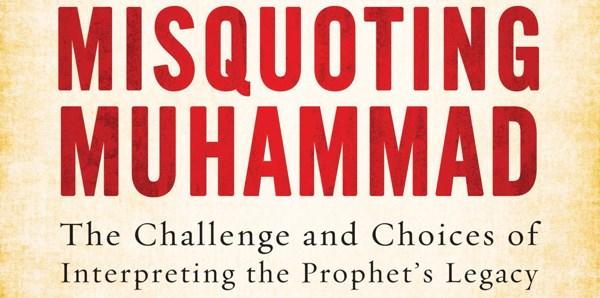The Islamic world is in turmoil, no-one can doubt that. But does it really need a Martin Luther-figure to move the situation forward? Not if you consider that a Reformation of sorts is well under way. Religious illiteracy among the commentariat is so endemic that calls for an Islamic Reformation have been coming thick and fast at a time when the religion has already spent the best part of a century engulfed in an agonising crisis analogous to that which beset Christendom in the early 1500s. It is only recently that Muslim intellectuals, acutely conscious that Reformations are usually founded on dubious hermeneutical ideals (‘let’s get back to how things were at the time of the founder…’) and always create disturbances and often violent conflict, have started to make the case for, to push the analogy even further, an Islamic Counterreformation. With no single centralised authority to speak of, the Sunni Caliphate having been abolished in the 1920s, that is no mean feat. This excellent book represents an accessible, elegantly written and erudite statement of the case.
The author is Jonathan Brown, a young Muslim academic currently working at the Jesuit Georgetown University in Washington DC. Brown has already established his scholarly credentials in the study of the hadith, the vast collection of traditional narrations of what Muhammad, the Prophet of Islam, did and said during his lifetime. There are quite literally hundreds of thousands of them and they function as Islam’s second scripture. As human texts, first passed on orally and then gathered together in various collections, their status ranks below that of the Qur’an, which Muslims take to be the word-for-word revelation of God sent down to the world in Arabic. Nonetheless, it is easy to argue that impact of the hadith on Muslim practice is rather greater. That is because Muhammad is not only the messenger who brings God’s revelations but he also applies it perfectly in his own life. An accurate and trustworthy account of his actions and words offer Muslims a vital clue as to the meaning of the Qur’an itself, a text which is not otherwise that easy to understand.
Non-Muslims can be nonplussed by the hadith. For anyone seeking a rapid, intellectual understanding of what Muslims believe, they are a frustrating impediment, constantly placing stories and one-off sayings where an abstract concept or principle ought to be. A Christian can be bemused at the detail with which Muhammad’s comportment is recounted, the way he shook hands or dressed; the imitatio Christi is a spiritual matter, not the copying of external gestures and the like (about which Christians have no information in any case). And as if all that were not enough, to allude to a hadith among Muslims is likely as not to provoke a lively discussion as to its authenticity. No wonder outsiders prefer to assume that the Qur’an is what really matters.
And yet the sunna (custom, habit) of Muhammad is the very core of Sunnism, and the sunna comes down to us through the hadith. There is quite simply no Sunni Islam without them. That, at any rate, is the headline message of this book and the fact that it needs to be stated tells us something about the advanced stage of the Islamic Reformation we are now enduring. For a singular temptation of Muslims down the ages has been to by-pass the hadith. Some Muslims have had recourse to speculative philosophy (Ibn Sina, Ibn Rushd), rationalistic theology (the mu’tazilites), a direct mystical encounter with God (the Sufis) or the codification of Islamic law European style (the late Ottoman Turks). But whilst these various ploys have made a contribution, the tradition always ends up asserting the absolute need for the Prophetic example to take centre stage. And so, when bien pensant commentators make their predictable call for a Reformation, it is the hadith they will often have in their sights.
Brown takes us through the fascinating story of how this orthodox consensus was formed around the centrality of the hadith corpus, and in doing so provides a highly readable and pedagogically agile account of the history of Islamic fiqh (jurisprudence). But he does more than this. He knows that the reader probably shares in some or other of the anti-hadith prejudices so typical of the modern mind, so there is an apologetic strand to the writing as he sets out to justify the value of studying and applying the hadith.
This apologetic enterprise shows Brown’s gifts to the full, for he is a model of honesty, openness and accuracy. It is understandable that Muslims responding to a hostile climate tend to limit their defence of the religion to easy platitudes: ‘Islam is a religion of peace’ is one that has been doing the rounds for some time. What Brown accomplishes is far more fruitful. He consistently faces the hard issues without flinching. He deals with the traditional duty of the Caliph to summon the community to regular jihad. He explores the issues surrounding the hudud punishments (amputations and other corporal and capital penalties imposed by Islamic law) and women’s rights. And he covers aspects of Islam’s treatment of religious minorities and apostasy. Perhaps he could have given more attention to the question of coerced conversion. He does give the impression (pp. 92, 102) that the Qur’anic dictum ‘there is no compulsion in religion’ (2:256) served as a guarantee against forcing people to become Muslims. Patricia Crone (not high, one suspects, on Brown’s list of favourite students of Islamic history) has argued that this was not the case; significant Muslim scholars explicitly took the injunction as compatible with coercing people to confess belief.
Throughout, Brown is generous to a fault when it comes to remarks about Christianity. Again, it is simple defence mechanism to defend one’s own religion by pointing to the shortcomings of another’s. But Brown’s (fairly abundant) comments on Christianity are accurate and contribute to better understanding rather than laying down a limit to what can and cannot be discussed.
Brown is also dazzlingly erudite. The book is based on his extensive reading of the traditional literature, almost all of which exists only in the original Arabic and Persian. He has chosen in this book to privilege the work of an eminent Indian scholar, Shah Wali Allah, often seen as the great renewer of subcontinental Islam in the 18th century. His was the intellectual task of reconciling to one another all the different strands of Islam present in the Moghul realms with a view to protecting them against foreign (i.e. British) encroachments. It is doubtless no coincidence that Brown looks to such a figure in the present day when Muslims still feel very much under attack from globalising western culture.
So the need for a Counterreformation is made clear. We Catholics ought not to feel that this has absolutely nothing to do with us. For whilst we do not accept the revelatory nature of the Qur’an or of the hadith, we can fully endorse the value of painstakingly elaborating a tradition which, over time, comes to embody the rich insights of experience and to encode an ever-deepening understanding of human nature.
The reviewer,Damian Howard SJ, lectures in Interreligious relations at Heythrop College, University of London and sits on the Editorial Board of Thinking Faith.






